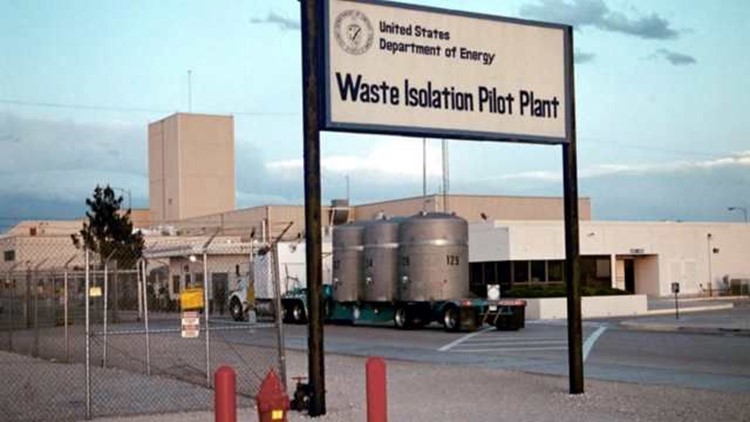CARLSBAD, N.M., - The U.S. Department of Energy (DOE) today reported new environmental monitoring data from samples collected at numerous locations on and around the Waste Isolation Pilot Plant (WIPP). Results indicate slightly elevated levels of airborne radioactive concentrations, which are consistent with the waste disposed of at WIPP. The samples taken demonstrate these concentrations remain well below a level of public or environmental hazard. The samples were collected by WIPP radiological and environmental monitoring personnel February 17-18 and sent to site laboratories for additional analyses.
Dose assessment modeling, which calculates potential radioactivity exposure to people, from the release data showed a potential dose of less than one millirem at each of the environmental sampling locations. A person receives about 10 millirems from a single chest x-ray procedure. The average person living in the United States receives an annual dose of about 620 millirem from exposure to naturally occurring and other sources of radiation.
Radioactive contamination is measured in a unit called disintegrations per minute, or DPM, and
refers to how quickly radioactive material is decaying and releasing radioactive particles and energy. WIPP is continuously monitoring the environment, and the latest air monitoring results ranged from 1.3 to 4.4 DPM based on preliminary analyses.
Samples were collected from several air monitoring stations on and around the WIPP site. After collecting the filters at each station, initial on-site analyses are completed before the samples are sent to the WIPP laboratories for more detailed final analyses. It usually takes about a week to analyze a set of samples and prepare preliminary data at the WIPP laboratories. There are also on-site air monitors that trigger an alarm in real time if airborne radioactive material is detected.
"There are no shortcuts," said Joe Franco, manager of the Carlsbad Field Office, which has
responsibility for WIPP. "Our scientists and technicians must complete detailed, comprehensive protocols to ensure the information we produce is accurate." Numerous air, soil and water samples have been collected on and around the WIPP site since the radiological event on February 14. Additional results will be made available as the analyses are completed.
Additional information related to the February 14 WIPP radiologic event is available at www.wipp.energy.gov. The Carlsbad Environmental Monitoring and Research Center, which is operated by New Mexico State University, is also conducting additional independent environmental monitoring and testing on and around the WIPP Site.



